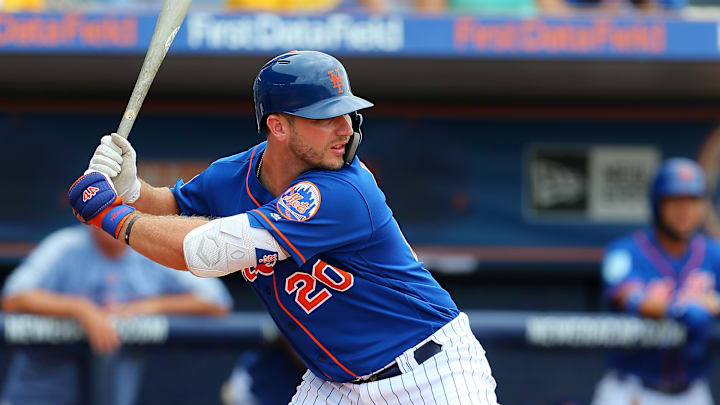2. Brandon Nimmo, 2018.
Heading into the 2017-18 offseason, the Mets had many holes to fill around the diamond and in the outfield. Without many resources in the minor leagues to make trades, Alderson had to get creative in filling the various roles. One of those scenarios was a reported trade with the Pittsburgh Pirates involving Andrew McCutchen. However, the Pirates requested a return of Nimmo, in which Alderson turned down the offer. Suffice it to say, Alderson's patience paid off in this decision.
Nimmo reported to Port St. Lucie without an everyday role in 2018. The Mets already had Cespedes, Conforto, and Lagares penciled in and retained Bruce on a 3-year contract. The 25-year-old outfielder was coming off a 2017 in which he only played 69 games but hit .261 with a .379 OBP and 5 home runs. With Nimmo still having options for the minor leagues, he seemed destined to serve as depth in Las Vegas. Per Conforto in 2017, Nimmo was determined to prove Alderson correct in rejecting the trade for a former National League MVP.
Nimmo would hit .306 with 3 home runs and 11 RBI through 19 spring training games. After it was announced Conforto would miss the first homestand recovering from shoulder surgery, Nimmo made the roster and hit leadoff on opening day. Even after Conforto was activated, Nimmo remained on the roster having hit .276 with a .447 OBP in April. He took advantage of injuries to Bruce and Cespedes during the season and hit 17 home runs through 140 games. Had Nimmo not impressed the Mets in spring training, he seemed vulnerable to being traded during the 2018 season.
